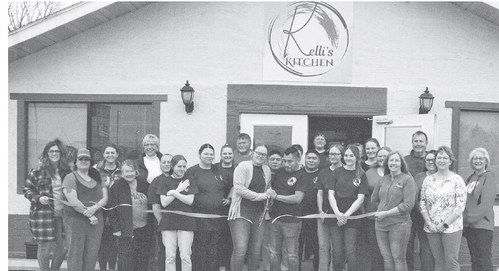Show us the money


Local governments could see shared revenue boost, but some wary of strings
More sales tax revenues will be coming back to the county and municipalities under provisions adopted as part of the state budget process. However, local leaders are cautious about what strings may be attached to the extra funds.
On June 20, Gov. Tony Evers signed 2023 Act 12 into law which was the result of negotiations between his office, Senate Majority Leader Devin LeMahieu (R-Oostburg), and Assembly Speaker Robin Vos (R-Rochester) They reached a tentative compromise regarding shared revenue, contingent upon several provisions, including a historic investment in K-12 schools and education. Gov. Evers and Republican leaders negotiated to reach a compromise on shared revenue that includes at least a 20% increase in shared revenue to most municipalities in the state.
See LOCAL on page 4 Taylor County finance director Larry Brandl is cautious about what impact the increased funds will actually have on the county’s bottom line. Taylor County has been hamstrung by state-imposed revenue caps for decades and was especially hit hard last year as inflation took a jump while the county’s tax base growth remained moderate. The county had to resort to using a short-term borrowing loophole in the revenue cap rules in order to close a general fund budget hole. This in turn, led to the county creating a special committee to try and identify $500,000 in cuts to be made to prevent the need for future borrowing.
With Taylor County in line to receive $706,342 in additional county aids, things look brighter when it comes to planning next year’s budget. However, as Brandl notes, it depends on what kinds of restrictions are placed on how the money can be spent. For example, money earmarked toward emergency services would not bring general fund budget relief because the emergency services has its own levy outside the county’s cap. Other concerns are if it is tied to creating additional spending such as with law enforcement.
Brandl said he will be watching closely for any guidance coming through on how the funds can be spent.
Regardless, the money represents a 67.8% increase in state funding over prior years.
“To me, the issue of shared revenue has always been about doing the right thing for Wisconsin. I began working on this when I took office four years ago, and that effort began for me with this simple truth: that for far too long, our local communities have been expected to do more with less,” Evers said during the bill signing ceremony. “Local partners for years have had to make impossible decisions, forced to choose between paying for first responders, addressing PFAS, fixing the roads, and other critical priorities that affect the health, safety, and well-being of folks across our state.
On Wednesday, Gov. Evers signed the state budget into law keeping the funding approved for local governments and schools but making other changes which he said will give the Republican-controlled legislature a “second chance” to address issues including the looming fiscal crisis facing child care in the state as COVIDera supplemental programs end.
In addition to the county, the city of Medford and other local municipalities are set to see an increase with the local town governments, by percentage the biggest winners under the new law. Towns typically have fewer government services overall, focusing on roads and providing fire protection services. Many towns have been hard pressed to keep up with road maintenance under their levy caps as material and labor costs have increased.
Several town governments saw their shared revenue funds more than double with a few seeing much larger percentage increases. The town of Grover will see a $307.6% increase going from receiving $10,884 per year in share revenue funds to $44,364. Hammel is another big winner going from $16,578 per year to $58,560 in state aids.
A big question for many local governments will be the impact from the repeal of the personal property tax. The state budget includes a repeal of this unpopular tax which affects many businesses, but also includes additional aid to municipalities which is intended to offset the decreased tax revenues as a result of the cuts.





